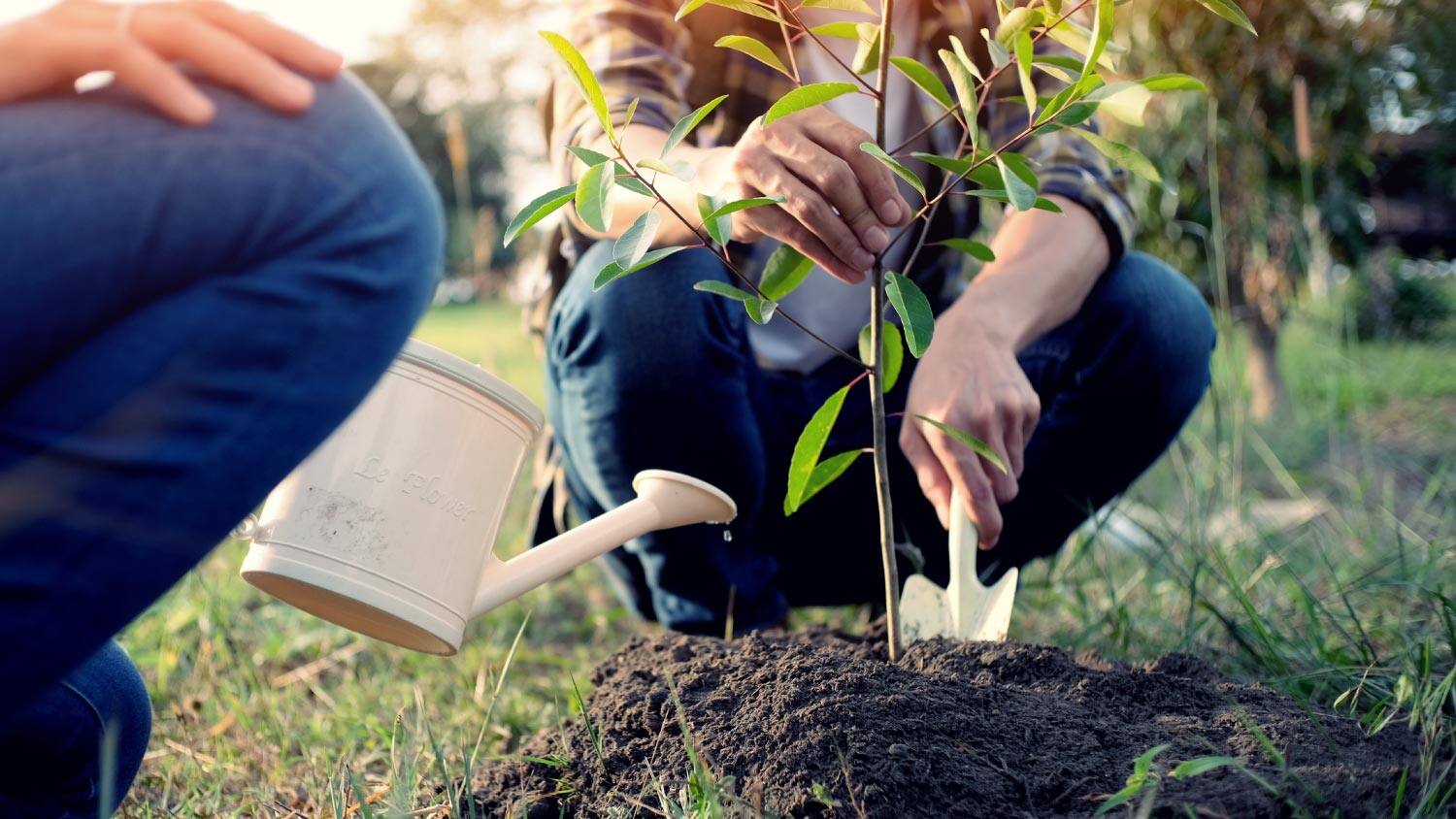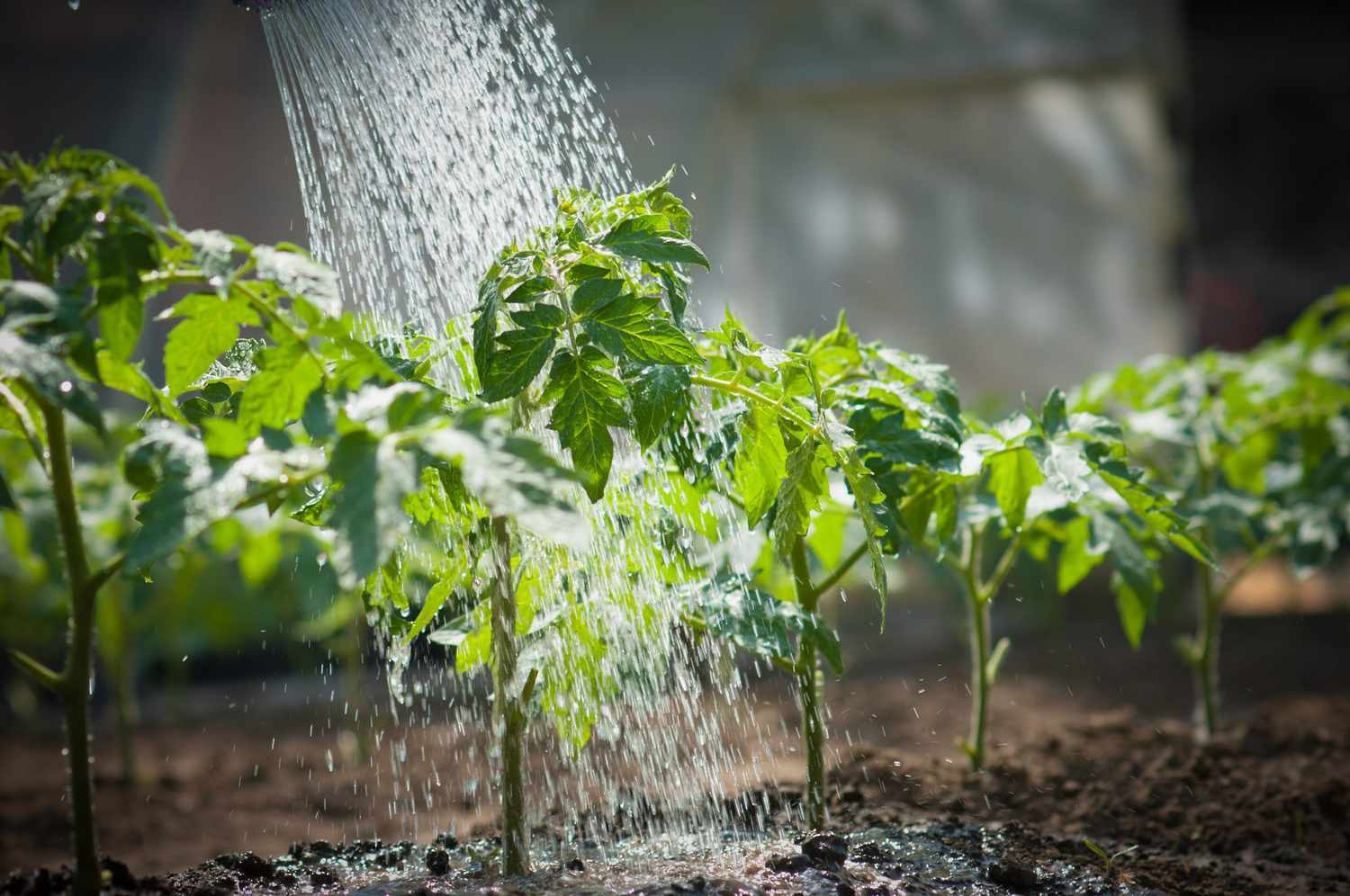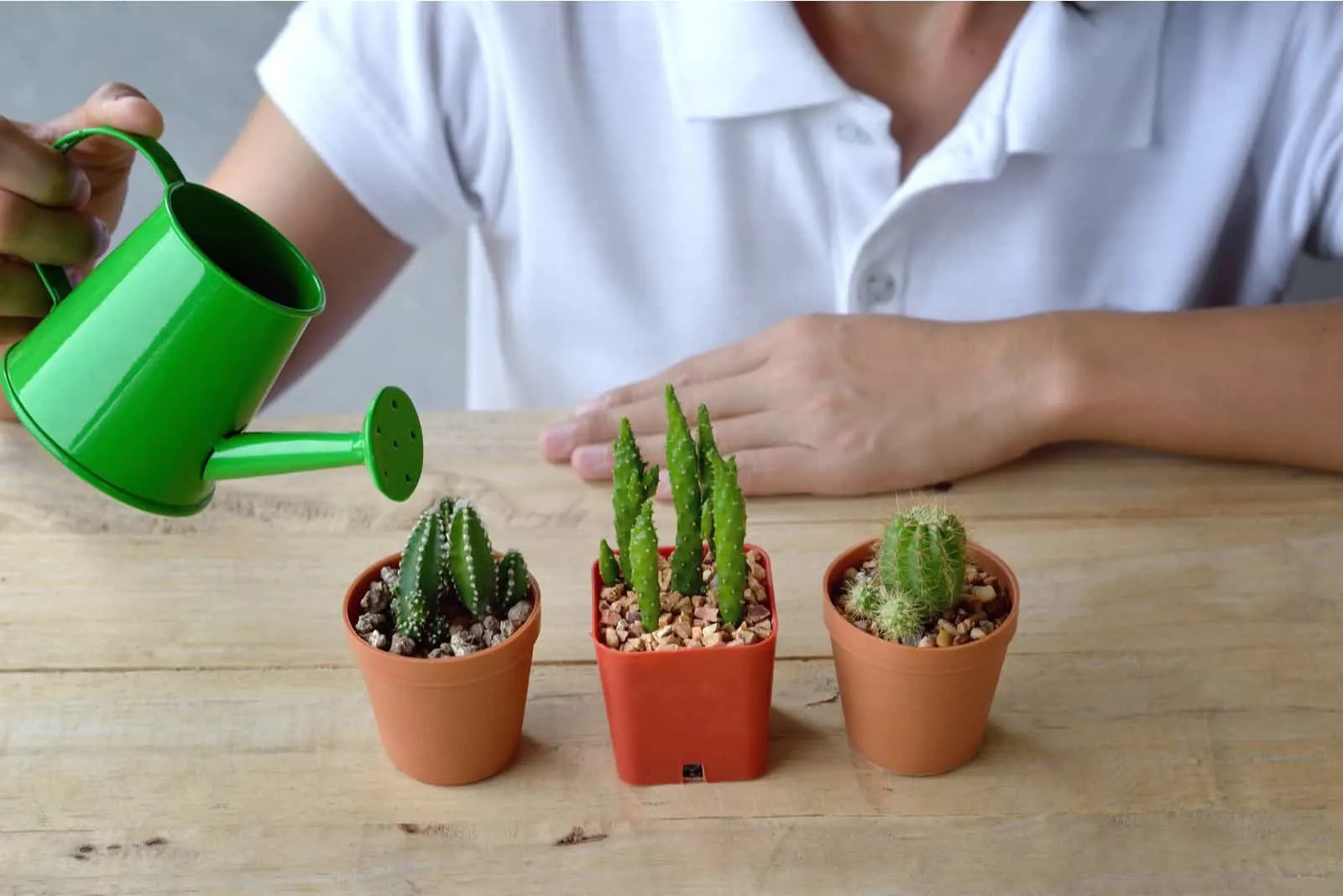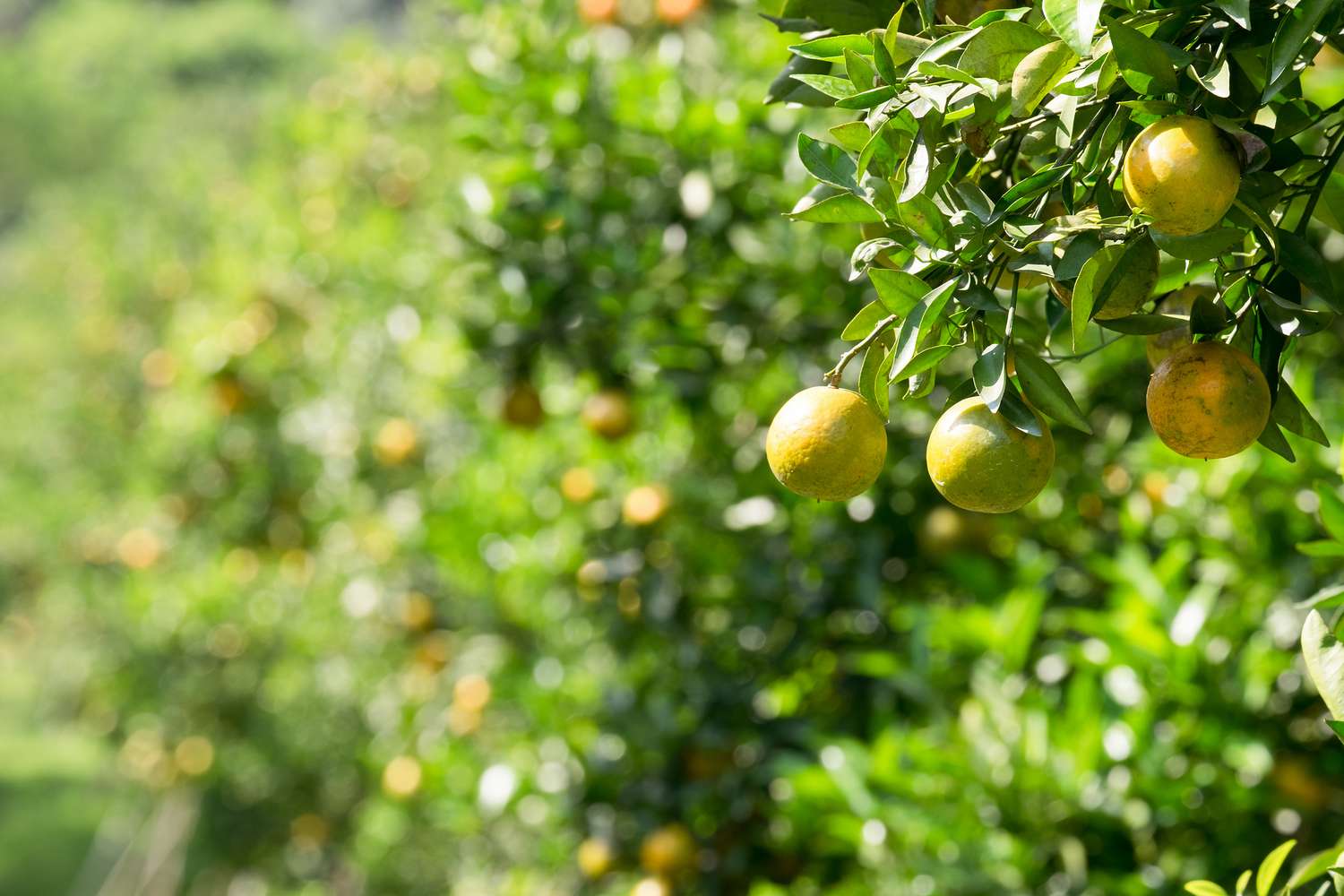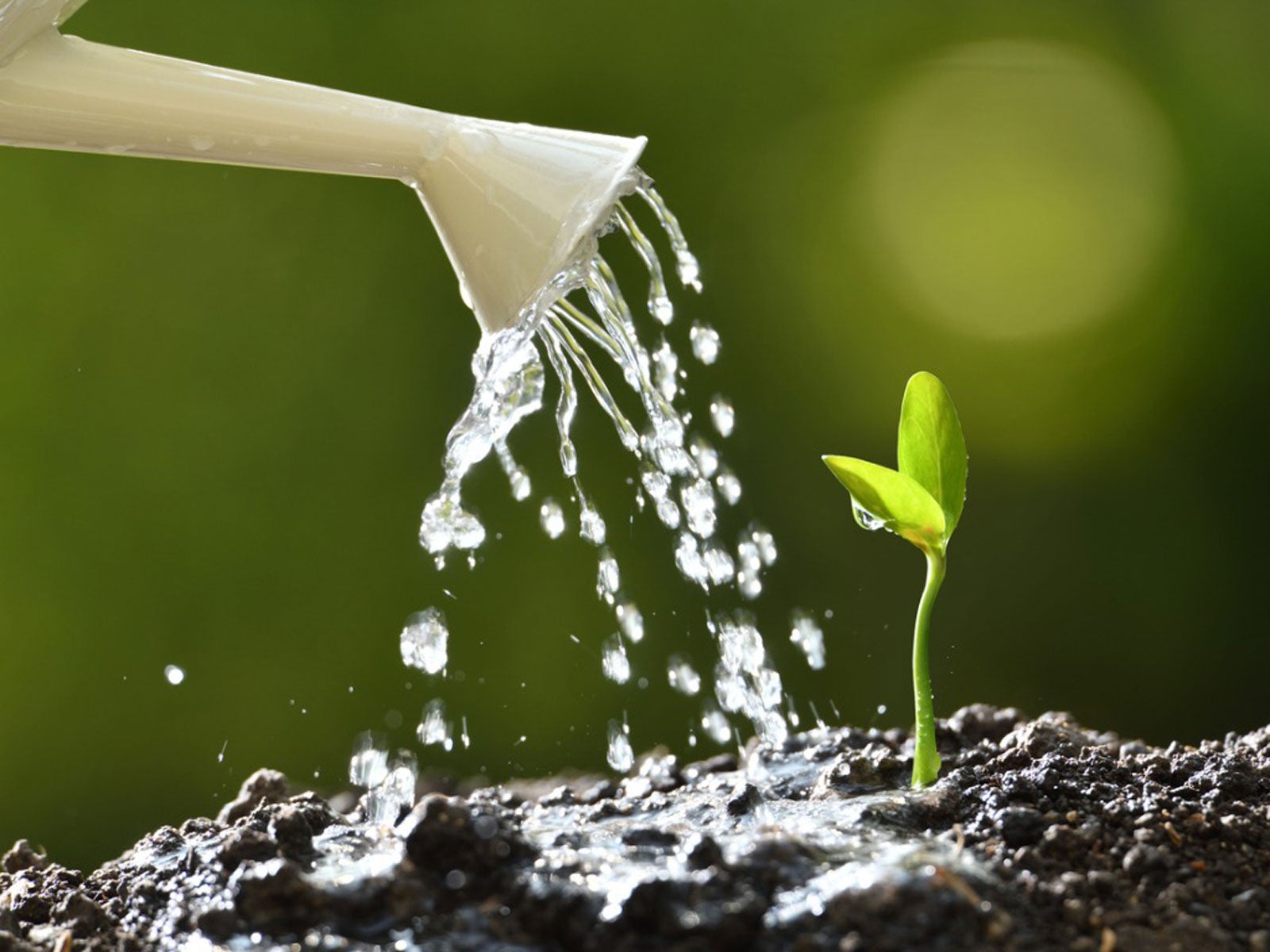Home>Types of Gardening>Ornamental Gardening>How Often To Water Boxwoods After Planting


Ornamental Gardening
How Often To Water Boxwoods After Planting
Published: August 26, 2023
Ensure the healthy growth of your newly planted boxwoods with proper watering frequencies. Learn the ideal watering schedule for boxwoods in your ornamental gardening journey.
(Many of the links in this article redirect to a specific reviewed product. Your purchase of these products through affiliate links helps to generate commission for Chicagolandgardening.com, at no extra cost. Learn more)
Table of Contents
Introduction
Welcome to the world of ornamental gardening! Whether you are an experienced gardener or just starting out, the beauty and elegance that ornamental plants bring to a garden cannot be denied. One such plant that is highly prized for its timeless appeal is the boxwood.
Boxwoods, with their glossy evergreen leaves and compact growth habit, are a popular choice among gardeners for creating formal hedges, topiaries, and borders. However, to ensure the health and vitality of these charming shrubs, proper watering is essential.
Water is a vital resource for all plants, and boxwoods are no exception. Understanding how often and how much to water your boxwoods is crucial in maintaining their lush green appearance and overall well-being. In this guide, we will delve into the factors that influence boxwood watering needs and provide you with a comprehensive watering schedule for newly planted as well as established boxwoods.
By following the tips and guidelines outlined in this article, you will not only be able to keep your boxwoods thriving, but also enhance the overall beauty of your ornamental garden. So, let’s explore the fascinating world of boxwood watering!
Factors to Consider
Before diving into the specifics of boxwood watering, it is important to consider a few factors that can influence the plant’s water needs. By taking these factors into account, you can tailor your watering routine to ensure the health and vitality of your boxwoods.
Climate: The climate you live in plays a significant role in determining how often you should water your boxwoods. In hot and dry climates, where evaporation rates are higher, boxwoods may require more frequent watering. On the other hand, in cooler and more humid climates, the water needs of boxwoods may be less.
Soil Type: The type of soil your boxwoods are planted in will also affect their water requirements. Boxwoods thrive in well-draining soil that retains some moisture but does not become waterlogged. Sandy or loamy soils tend to drain quickly, requiring more frequent watering, while clay soils retain moisture for longer periods, necessitating less frequent watering.
Plant Size and Stage of Growth: The size and stage of growth of your boxwoods will also influence their water needs. Newly planted boxwoods and younger plants generally require more frequent watering to establish their root systems and promote healthy growth. Mature boxwoods, on the other hand, have a more extensive root system and may need less watering.
Exposure to Sunlight: The amount of sunlight your boxwoods receive can impact their water requirements. Boxwoods planted in full sun may need more frequent watering to compensate for increased evaporation, while those in shaded areas may require less water.
Container vs. Ground Planting: If you have boxwoods planted in containers, they may need to be watered more often than those planted in the ground. Container-grown boxwoods have limited access to soil and can dry out more quickly.
By considering these factors, you can tailor your watering routine to meet the specific needs of your boxwoods, ensuring they receive the optimal amount of moisture for healthy growth. Now, let’s move on to the next section where we will outline the watering needs of newly planted boxwoods.
Boxwood Watering Needs
Understanding the specific watering needs of boxwoods is crucial for maintaining their health and vitality. Boxwoods require consistent and adequate moisture, but overwatering or underwatering can both be detrimental to their overall well-being.
As a general guideline, boxwoods prefer moist, but not waterlogged, soil. Consistent moisture is important, especially during the first year after planting, to help establish a strong root system. However, it’s important to allow the soil to dry out slightly between watering to prevent waterlogged conditions that can lead to root rot.
It’s essential to keep in mind that boxwoods have shallow and fine root systems, which can make them more susceptible to drought stress. If they are not provided with enough water, they may show signs of stress, such as drooping leaves or discoloration.
On the other hand, overwatering boxwoods can lead to root suffocation, as well as increased susceptibility to diseases and pests. It’s important to find the right balance to ensure optimal growth and health.
One way to determine when to water your boxwoods is to check the soil moisture. You can do this by inserting your finger about an inch into the soil. If it feels dry at that depth, it’s time to water. However, if the soil feels moist, it’s best to hold off on watering until it dries out a bit.
Now that we understand the watering needs of boxwoods, let’s move on to the next section where we will discuss the watering schedule for newly planted boxwoods.
Watering Schedule for Newly Planted Boxwoods
Newly planted boxwoods require special attention when it comes to watering. Establishing a strong and healthy root system during the first year is crucial for the long-term success of the plants.
During the initial phase after planting, boxwoods will need more frequent watering to aid in root establishment. The goal is to provide consistent moisture without overwatering.
Typically, newly planted boxwoods should be watered deeply once or twice a week, depending on the climate and soil conditions. This allows the water to penetrate the soil to a depth of about 6 to 8 inches, encouraging the roots to grow deeper.
It’s important to water slowly and evenly, ensuring that the water is reaching the root zone and not just running off the surface. Using a soaker hose or drip irrigation system is ideal for delivering a slow and consistent water supply to the plants.
Keep in mind that extreme weather conditions may necessitate adjustments to the watering schedule. During periods of high heat or drought, you may need to increase the frequency of watering or provide additional water to prevent the boxwoods from becoming stressed.
Regularly monitoring the soil moisture and adjusting the watering schedule accordingly will help you establish a healthy root system and promote the overall well-being of your newly planted boxwoods.
In the next section, we will discuss the signs of overwatering or underwatering boxwoods, allowing you to identify any issues before they become severe.
Signs of Overwatering or Underwatering Boxwoods
Properly gauging the moisture needs of your boxwoods is crucial to avoid overwatering or underwatering, both of which can negatively impact their health. By being observant and looking out for specific signs, you can determine if your boxwoods are receiving the right amount of water.
Signs of Overwatering:
- Yellowing or wilting leaves
- Foul odor emanating from the soil
- Excessive growth of algae or moss on the soil surface
- Root rot or fungal diseases
- Soft and mushy roots
These signs indicate that the boxwoods are receiving too much water, leading to saturated soil and poor oxygenation of the roots. Overwatering can lead to root rot, which can be fatal for the plants if not addressed promptly.
Signs of Underwatering:
- Wilting or drooping leaves
- Dry and brittle foliage
- Leaf scorch or browning of leaf edges
- Stunted growth or slow development
- Increased susceptibility to pests or diseases
If your boxwoods exhibit these signs, it indicates that they are not receiving enough water. The soil may be dry and lacking in moisture, causing stress and dehydration in the plants. Underwatered boxwoods are more vulnerable to pest infestations and may have reduced growth and vitality.
By closely monitoring your boxwoods and being aware of these signs, you can take appropriate action to adjust your watering routine and prevent any potential damage.
In the next section, we will discuss the best practices for watering established boxwoods, ensuring their continued health and beauty.
How to Water Established Boxwoods
For established boxwoods, a slightly different approach is needed when it comes to watering. These well-established shrubs have a more extensive root system and can withstand drought conditions better than newly planted boxwoods. However, they still require regular and adequate moisture to thrive.
When watering established boxwoods, it’s important to focus on deep watering rather than frequent shallow watering. This encourages the roots to grow deeper into the soil, making the plants more resilient and better equipped to withstand dry periods.
Watering deeply once every 7-10 days during the growing season is generally sufficient for established boxwoods. However, the frequency may need to be adjusted based on factors such as climate, soil type, and rainfall.
When watering, aim to moisten the soil to a depth of about 6 to 8 inches, ensuring the water reaches the entire root zone. Avoid shallow watering that only wets the surface soil, as it can encourage shallow root growth and make the plants more susceptible to drought stress.
Using a slow and gentle watering technique, such as a soaker hose or drip irrigation system, is recommended. This allows the water to penetrate the soil slowly and deeply, minimizing runoff and maximizing absorption by the roots.
During periods of prolonged drought or hot weather, you may need to increase the frequency of watering or provide supplemental irrigation to ensure the boxwoods receive adequate moisture.
Remember to always check the soil moisture before watering. Insert your finger into the soil about an inch deep to gauge if it feels dry or moist. If the soil is still moist, it’s best to hold off on watering and check again in a few days.
By following these watering practices, you will help maintain the health and beauty of your established boxwoods, giving them the necessary moisture for robust growth and longevity.
In the next section, we will share some additional tips for proper boxwood watering to further enhance their performance in your garden.
Tips for Proper Boxwood Watering
To ensure the best care for your boxwoods and optimize their watering routine, here are some helpful tips:
- Water in the morning: It’s best to water boxwoods in the morning, allowing the leaves and soil to dry before evening. Watering in the late afternoon or evening can promote the growth of fungal diseases, especially in humid conditions.
- Avoid overhead watering: Whenever possible, avoid watering boxwoods from above. Instead, focus on watering the soil directly at the base of the plants. This helps reduce the risk of leaf diseases and ensures that the water reaches the root system effectively.
- Mulch: Apply a layer of organic mulch around the base of your boxwoods. This helps retain moisture in the soil, reduces weed growth, and regulates soil temperature. Mulch also acts as a natural insulator, keeping the roots cool in summer and warm in winter.
- Monitor rainfall: Be mindful of the amount of rainfall your garden receives. Heavy or frequent rainfall can affect the watering requirements of your boxwoods. Adjust your watering schedule accordingly to prevent overwatering.
- Establish a watering routine: Consistency is key when it comes to watering boxwoods. Establish a regular watering schedule and stick to it, while also being flexible to adjust based on the specific needs of your plants and changing environmental conditions.
- Consider using a moisture meter: A moisture meter can be a helpful tool in determining the moisture level of the soil. It takes the guesswork out of watering and helps you determine when it’s time to water.
- Observe plant response: Pay attention to how your boxwoods respond to watering. If they are thriving and looking healthy, you can maintain your current watering routine. However, if you notice signs of stress or overwatering, adjust your watering frequency to better suit the needs of the plants.
By following these tips, you will be equipped with the knowledge and strategies to properly water your boxwoods. Remember, the goal is to provide consistent moisture without waterlogging the soil or subjecting the plants to extended periods of drought. With proper watering, your boxwoods will continue to thrive and add beauty to your ornamental garden.
Conclusion
Proper watering is essential for maintaining the health and vitality of boxwoods in your ornamental garden. By understanding the factors that influence their water needs and following a consistent watering routine, you can ensure optimal growth and beauty.
Remember to consider the climate, soil type, plant size, and sunlight exposure when determining how often to water your boxwoods. Newly planted boxwoods require more frequent watering to establish strong root systems, while established boxwoods benefit from deep and infrequent watering.
Be vigilant in watching for signs of overwatering or underwatering, such as leaf discoloration, wilting, or fungal growth. These signs can help you adjust your watering routine to provide the appropriate moisture levels for your boxwoods.
Implementing proper watering techniques, such as watering in the morning, using soaker hoses or drip irrigation, and applying mulch, can further enhance the success of your boxwoods. Regularly monitor soil moisture, adjust watering schedules as needed, and consider using a moisture meter for accurate measurements.
Ultimately, your efforts in proper boxwood watering will pay off as you enjoy the enduring beauty, vibrant green foliage, and elegant form of these magnificent shrubs in your garden.
We hope that this comprehensive guide has provided you with valuable insights and practical tips to help you successfully care for your boxwoods. Happy gardening!
